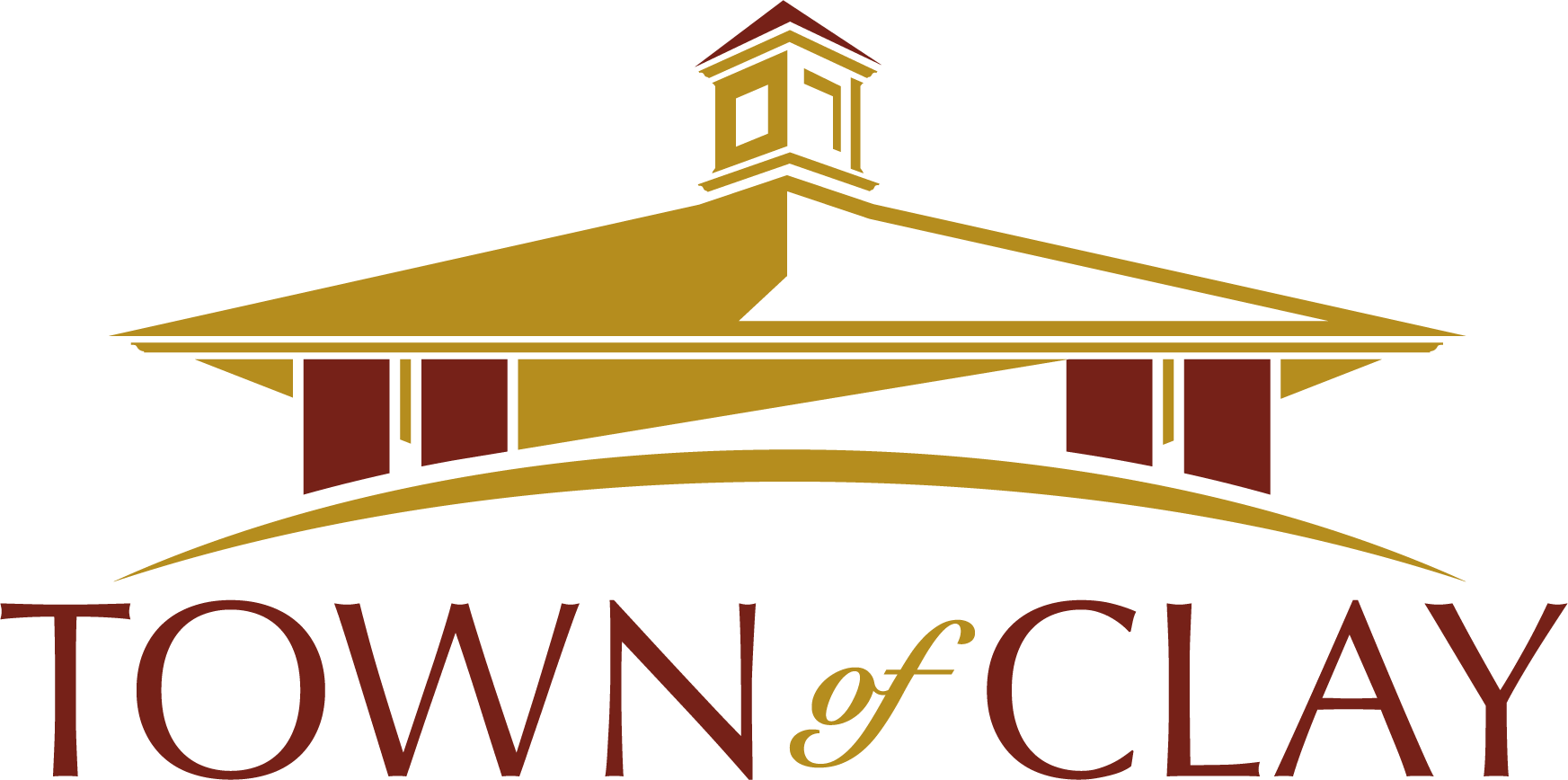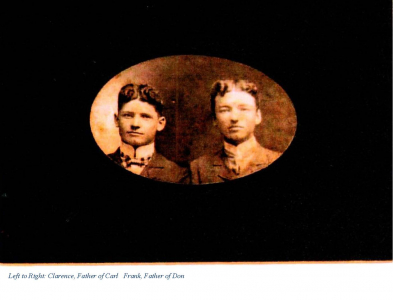CLAY HISTORY FROM THE BEGINNINGPosted on January 1, 2012 |
The first settlers in Clay are believed to be the Onondagas who made a settlement at Three Rivers. In 1570, the Iroquois Confederacy was formed with the Onondagas, Cayugas, Mohawks, Oneidas, and Senecas with the Tuscaroras joining later to become the six Nations. The Algonquins called them “Iriakhoiw”, meaning rattlesnakes, thus the white man called them “Iroquois”. Many of them sided with the English, who had helped them in the French and Indian War. So when the Americans won their independence , the Indian land was either bought or taken. DeWitt Clinton laid out 25 townships , reserving land for religion, schools and political use. They were named after distinguished men in the classics. American veterans were given parcels in payment for their services. Clay was formed in 1827 mainly from Cicero and the portion of the Hamlet of Belgium in Lysander east of the Seneca River.
When the settlers came west, they found the Indians living much as they had for hundreds of years. A favorite spot was in Caughdenoy in northeast Clay where the Indians set eel traps in the Oneida River. Caughdenoy means “where the eels lie down.” The settlers did the same only using wire instead of tree branches. One of the first settlers is believed to be Patrick McGee who was taken prisoner by the English in 1780, tied to a tree at Three Rivers Military Camp and viewed the beautiful scene where the rivers joined. He vowed to come back if he lived through the War. He did and in 1793, he built a log cabin at Three Rivers where he lived until his death.
A major group who began arriving in 1812 were the Palatines, among them the Youngs, Wellers, Moggs , Beckers , VerPlanks, Van Hoesens, Hillers, Kochers, Somners, Ottmans, Wises, Emples, Lemms VandeWerkens, and many others forming the hamlets of Youngs and Dutch Settlement. They had been evicted from Germany when the French overran the Palatinate. Finally Queen Anne of England boarded them on ships for the “new world” in 1709 as indentured servants to work for her making tar and other naval supplies. Since these very skillful artisans and farmers came with nothing and lived in Camps along the Hudson, they depended on England for everything. Near starvation they left and moved to Schoharie near the Mohawk River as free men. Other family settlements were: Dewey’s Curve, Morgan’s Landing, Pitcher’s Corners, Morgan Settlement, Beckertown, Lynnville, Hall’s Corners. And of course the hamlet of Podunk to become North Syracuse, Clay Corners to become Euclid and Oak Orchard. At one time there were 26 one-room school houses to teach their children. Many still stand and are private homes. Lynn School on Van Hoesen Road is the home of the Clay Historical Association.
These early pioneers opened saw mills, factories, canneries , and stores of all kinds. They had cottage industries as cigars. When the railroad came through in 1877, the post office in the station was called Cigarville. Every family farmed to take care of their families. Many, as Anthonys, were a self-sufficient little villages unto themselves. Not only raising all their food, but making tools and clothing from wool and flax and preserving everything .
Of interest is that the first Plank road ran along the eastern border of Clay. The Erie Canal built in 1815 had a spur that ran from the Mohawk River to Oneida Lake to relieve the canal boat congestion in Syracuse. It has 26 miles of waterfront which was very important in the days of the steamboat and barge shipping era along with settlers going west all the way to Chicago.
Some important landmarks still stand. Immanuel Lutheran Church on 31 is the oldest congregation in Clay and the oldest Lutheran Church in Onondaga County. It was started by the same Palatines who formed what is now the Town of Clay. The Morgan Settlement Church on Morgan Road (now housing the Anglican Church) is the oldest Church building used for its original purpose. The Euclid Hotel is the oldest business till in use as originally built. The Hiawatha Lodge on Henry Clay Blvd. is the oldest pillared home (although there are many frame houses still being lived in). In Pine Plains Cemetery on Henry Clay Blvd, are buried many Indians, along with the first white man (Peter Young) and Civil War Veterans. Morgan Cemetery across from the Church on Morgan Road has Civil War and some Revolutionary War Veterans buried there.
The most important land mark we believe is Three Rivers. Not only is it a magnificently beautiful area, but was important to the Indians known as Haudenosaunee. It was their meeting place. Over a hundred years ago, it was the site of a famous resort called Barnums with people coming by boat or trolley to enjoy picnics, fire works, and even a cirsus. The land is now owned by the Town and plans are in the works for a beautiful multi-use area. Perhaps permanent living facilities, a park, boat launch, eating establishments, overnight accommodations, and star performances once again.
-Dorothy Heller, HistorianOther
Remember Clay Stories

Henry Clay - The Town's Namesake
Remembering Clay | May 15, 2018
REMEMBERING CLAY
Henry Clay – The Town’s Namesake
Remember Clay - Solomon Kittle - Clay Civil War Veteran
Remembering Clay | Sep 6, 2017
REMEMBERING CLAY
Solomon Kittle – Clay Civil War Veteran


